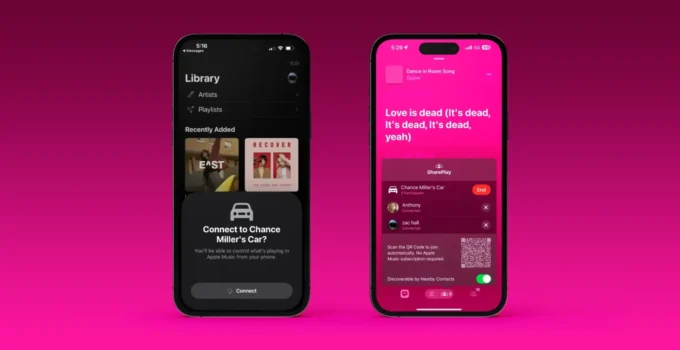Apple Introduces SharePlay Music Control to HomePod and Apple TV with iOS 17.4 Update. Apple is enhancing its ecosystem with the integration of the SharePlay Music Control feature, now available on HomePod and Apple TV with the latest iOS 17.4 and tvOS 17.4 updates. This extension of SharePlay brings a collaborative dimension to music listening, allowing guests to control music playback on HomePod speakers and Apple TV, with the host’s permission. Initially available only in the Music app, the feature uniquely does not require participants to have an Apple Music subscription.
iPhone 16 Pro to Boast Improved Camera Sensor, Aiming for High-Quality Imaging and 8K Video
This update follows Apple’s introduction of a similar functionality in CarPlay last year, which enabled passengers to control music via SharePlay, granted they had approval from the driver. Extending this capability to HomePod and Apple TV devices, Apple is transforming the way music is enjoyed in shared spaces.

For HomePod users, including those with the HomePod mini, the process is straightforward. When a song is playing in the Music app on an iPhone, tapping the SharePlay icon at the bottom of the screen generates a QR code. Other individuals, whether using an iPhone or an Android smartphone, can scan this code to request access to the music controls. Interestingly, even a screenshot of the QR code can be used for this purpose, facilitating remote access for friends or family across the globe.
Similarly, for Apple TV, tvOS 17.4 allows the Music app to display a QR code on the TV screen. Guests can scan this code to request control over the music playback, adding a social and interactive element to gatherings.

This expansion of SharePlay to Apple’s HomePod and Apple TV devices is especially appealing for social events like house parties, where everyone can have a turn at being the “DJ.” It signifies Apple’s continued efforts to make its devices more interactive and socially inclusive, enhancing the user experience through shared control and engagement in entertainment settings.



